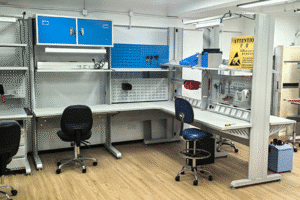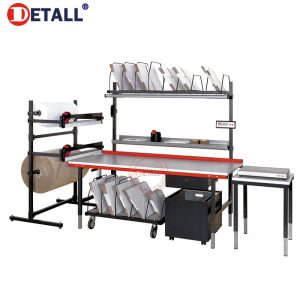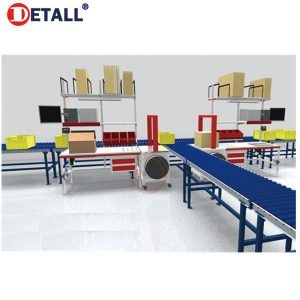Why Is Ergonomics So Important in Workbench Design?
Static shocks, injuries, fatigue, low efficiency—these are common issues in industrial workplaces. Yet one powerful and often underestimated solution lies in ergonomic design. In modern manufacturing and assembly environments, an ergonomic workstation isn’t just a “nice-to-have”—it’s essential for safety, productivity, and long-term success.
What Is Ergonomics?
Ergonomics, also known as human factors engineering, is the science of designing tools, equipment, and environments that fit human capabilities and behaviors.
The goal? To improve performance while reducing the risk of injury and fatigue.
In simple terms: ergonomics helps people work better, faster, and safer.
What Is the Role of Ergonomics in Workstations?
Optimizing workstation design, functionality, and accessories can significantly reduce repetitive motion, excessive force, and awkward postures. This leads to higher efficiency and minimizes health issues caused by poor workplace setup.
Ergonomic workstations help to:
- Improve precision and reduce errors
- Reduce musculoskeletal strain
- Minimize fatigue and increase focus
- Extend employees’ career longevity
What Impact Does Ergonomic Design Have?
Workstations that ignore ergonomic principles can cause:
- Back, neck, and shoulder pain
- Increased absenteeism and staff turnover
- Reduced motivation and lower output
On the other hand, well-designed ergonomic workbenches can:
- Shorten cycle times
- Increase overall efficiency
- Lower injury and insurance costs
- Improve employee retention and satisfaction
Here’s a breakdown of the measurable benefits:
| Advantage | Impact | Result |
|---|---|---|
| Shorter cycle times | Faster task completion | Higher output, reduced costs |
| Fewer injuries | Less strain and stable movements | Lower compensation and medical expenses |
| Better retention | Comfortable, engaging workspace | Lower turnover, more motivated workforce |
Investing in ergonomics means investing in people.
Comfortable workers are more motivated, efficient, and consistent—saving time and money.
What Makes a Workstation Ergonomically Excellent?
A cluttered or rigid workstation slows productivity and increases stress. Poor design leads to frustration and physical strain.
A great ergonomic workspace features adjustability, organization, and proper lighting. It follows core principles to ensure comfort and productivity.
A well-designed ergonomic workstation includes:
- Adjustable height (electric or manual)
- Tilt-adjustable surfaces or monitor arms
- Proper layout with accessible tool storage
- Glare-free adjustable lighting
- Modular design for task-specific customization
Here are the five ergonomic principles and how to apply them:
| Principle | Action | Benefit |
|---|---|---|
| Optimize positioning | Adjust height, tilt work surfaces | Reduce stress, fit various body types |
| Eliminate extreme movements | Keep tools within arm’s reach | Prevent overreaching injuries |
| Minimize force and repetition | Use lightweight, modular tools | Reduce fatigue and repetitive strain |
| Organize and color-code layout | Label bins, arrange tools logically | Speed up tasks, reduce human error |
| Optimize lighting | Use glare-free adjustable lighting | Improve visibility and concentration |
Conclusion: Ergonomics Is a Core Design Element, Not a Luxury
An ergonomic workbench is not just about comfort—it’s a strategic investment that enhances safety, efficiency, and business performance.
As manufacturers place more value on employee wellbeing and operational output, the industry must shift from machine-centered to people-centered design.
By investing in ergonomic workstations, businesses can:
- Save on training and compensation costs
- Improve employee focus and satisfaction
- Minimize human error, increase product quality
- Enhance brand image and workplace appeal
The best tools aren’t the most expensive—they’re the ones that fit the people who use them.



